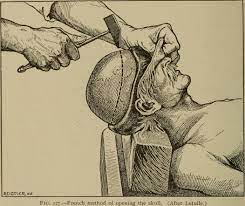Introduction: What exactly is a post mortem? 🤔
Post mortem or autopsy is the medical examination of a dead body in order to determine the cause of death or document disease processes for research or medical education purposes. This involves a careful, methodical, and detailed study of the dead body. External and internal parts and organs are inspected for injury, disease, or any abnormality.
The most common reason for postmortem in Kenya is the determination of the cause of death and is what most people identify post mortem with.
The words post-mortem means “after death”. The other commonly used term is autopsy.
History of Post mortems in Kenya.
Post mortems have been performed as far back in history as the time of Hippocrates in ancient Greece. Many civilizations have performed autopsies in one form or another as part of medical education including Chinese, Indian and Egyptians.
In Kenya, records of the conduct of modern post mortem go back to the arrival of white colonialists and the establishment of Western Medicine in the country.
The practice of post mortem has grown tremendously, in tandem with the rest of the healthcare field. However, the rates of postmortem in Kenya remain low compared to WHO recommended levels and other developed countries.
Importance of post mortems
Postmortem allows us to determine the cause of death that occurred in unclear, suspicious circumstances or involved a third party. It’s also very useful in establishing circumstances surrounding the death of a pregnant mother. This is referred to as maternal mortality is taken very seriously the world over. Autopsy reports are usually very informative during audits of such unfortunate deaths.
Autopsies helps in the study of new diseases and characterize their pathologic effects on various body systems e.g. The ongoing Covid-19 pandemic. Sometimes, a postmortem is part of the identification of dead bodies
Types of post mortem
There is post-mortem several ways to categorize post-mortems. This could be based on the type of procedure used or based on the reason/indication.
Based on Procedure
- Complete diagnostic postmortem
- Minimally invasive tissue sampling (MITS)
Based on the reason for the post mortem
- Forensic – Deaths in unclear circumstances, trauma, death within
- Maternal Mortality – Special mention
- Clinical
- Special Study /Research
Where are postmortem performed within Kenya?
- Public hospitals eg Kenyatta national hospital, Level V hospital in Thika, Nyeri, Coast General, Nakuru, Moi Teaching and Referral Hospital.
- Most County hospitals (Level IV) also have the capacity to carry out post mortem.
- Most of the leading private and missionary hospitals carry out postmortem.
- Stand-alone Funeral homes have the facilities for postmortem eg Lee Funeral home, Montezuma etc. Other funeral homes in most counties have facilities for postmortem services.
Who Performs Postmortems in Kenya?
Autopsies are performed by a multidisciplinary team led by a pathologist. If no pathologist is available, a medical officer can carry out the procedure. Other professionals in the team include anatomic pathology technicians and forensic scientists.
The laboratory science professionals are critical for specimen analysis. In Kenya, in forensic cases where toxicology is required, samples are submitted to the Government Chemist for toxicology analysis.
Cost of post mortem
Forensic, study, and clinical autopsies are not charged to the family of the deceased, the cost is borne by the government, researchers or hospital respectively. However, if the family wishes to have their own private pathologist attending the post mortem, they will bear the cost. The same applies if the postmortem is requested by the family for whatever reason. This cost of post mortem can vary considerably based on a variety of factors. Leading forensic pathologists in the country tend to charge higher fees, as well as those conducted in tier private facilities.
The range and complexity and availability of additional laboratory studies can have a sharp escalation on the cost of post mortem. Conversely, Kenyan public hospitals, smaller private and mission hospitals and funeral homes have lower rates. The Kenya Medical Practitioners and Dentists Council( KMPDC) has published the recommended fees for postmortem in Kenya (pdf) and The range is between KES 20,000 – KES 150,0000 with an average of around KES 50,000.
Role of relatives/guardians
The relatives or guardians of the deceased play an integral part in the postmortem process. With empathy, the need for the postmortem is explained in detail and given room to make a decision. Informed consent is required for clinical / research post mortems. Forensic autopsies in Kenya do not require the consent of relatives. However, their representation wishes should be honored if requested.
The second important role is the identification of the body. This has to be beyond reasonable doubt. Usually, two close relatives identify the body, and their own details are recorded in the autopsy notes.
Ethical Considerations
Postmortems must be carried out with utmost fidelity to laid out procedure, either institutional, national or international. For research purposes, Ethical Review Board (ERB) approval is required.
Care must be taken to avoid unnecessary mutilation of the body. After the procedure, the body should be sutured back carefully and returned to as near the normal anatomical form as possible.
Postmortem: The actual Procedure
The actual procedure used depends on the type of postpartum being conducted. The most commonly used involves making an incision from the chest and abdomen, removing all the internal organs and dissecting each organ, weighing it, and taking samples for histology. The scull is also opened brain examined and removed for further examination. Any bleeding and fractures or other injuries, evidence of surgical interventions are documented in detail including site, size of the lesion, changes, etc.

In the MITS procedure (see above) the body is not opened up. Rather, Biopsy samples and fluids are taken from most body organs. MITS is used mostly in research settings, although in developed counties it’s increasingly being used as the standard.
- MITS procure
- Area of interest
- Documentation through photos, charts, audio recording.
Cause of Death
Determining the cause of death is one of the primary reasons why post mortems are conducted in Kenya. At the end of the postmortem, several outcomes are possible:-
- Cause of death is established
- Cause of death undetermined pending further tests eg toxicology, histology
- Cause of death remains undetermined
Manner of death
The manner of death describes the nature of circumstances that resulted in death. Under WHO classification, there are 5 categories of the manner of death as set out below.
- Natural
- Accidental
- Suicide
- Homicide
- Undetermined
Post mortem report
A comprehensive report detailing the procedure and the findings is prepared by the pathologist conducting the post mortem. The information includes the identification of the deceased, external examination, description of the procedure done. All the organs are described in detail noting any abnormalities, injuries or disease states.
Finally, a determination of the cause of death and sometimes the manner of death and or circumstances are included. Forensic reports are usually submitted to the police, although relatives can also have a copy. If the case goes to court, the defendant is also entitled to a copy of the report. A preliminary report may be issued pending laboratory results.
Aside from the report, the D1 form is also filled out immediately after the postmortem. It comprises 2 parts – Burial permit and Death Notification. Allows burial to take place immediately after postmortem even as the investigations are ongoing.
Challenges with postmortem in Kenya
Factors Influencing Acceptance of Post-Mortem Examination of Children at a Tertiary Care Hospital in Nairobi, Kenya while tremendous progress has been made in recent years, several challenges remain. The first is regulatory. The Coroners Act of 2017 is yet to be operationalized yet it was passed by parliament several years back. The Act’s main objective is to introduce coroner service in Kenya as an independent practice and devolve it into counties. Much of postmortem services fall under coroners Service
The Coroners Service Act (2017) can be accessed using this link.
The lack of pathologists especially in the public healthcare system is another major gap. A good number of counties eg Nyandarua County does not have a pathologist.
Cultural and religious perceptions have also hindered the practice. This is especially encountered in communities that bury deceased within 48hours of death. African cultures revere the dead and are wary of mutilations. Most do not consent to clinical or study postmortems as they want to finish the burial rites and
Conclusions
The practice of post mortem is an important aspect in both medical and forensic fields. It’s a topic increasingly in public discourse although there’s a general lack of information and misinformation about it. This article has attempted to give a broad overview of postmortem practice in Kenya. In the future, we will address specific aspects of the topic.
In case of reactions, please interact with us via the comment section or our contact page.
Read More…
- Factors Influencing Acceptance of Post-Mortem Examination of Children at a Tertiary Care Hospital in Nairobi, Kenya (https://annalsofglobalhealth.org/articles/10.5334/aogh.2504/)
- The National Coroners Service Act,2017(pdf)
- KMPDC Fees schedule for medical and dental procedure (pdf)
Disclosure
This article was authored by a guest contributor, Dr J Ngugi. The opinions presented here are his own.
